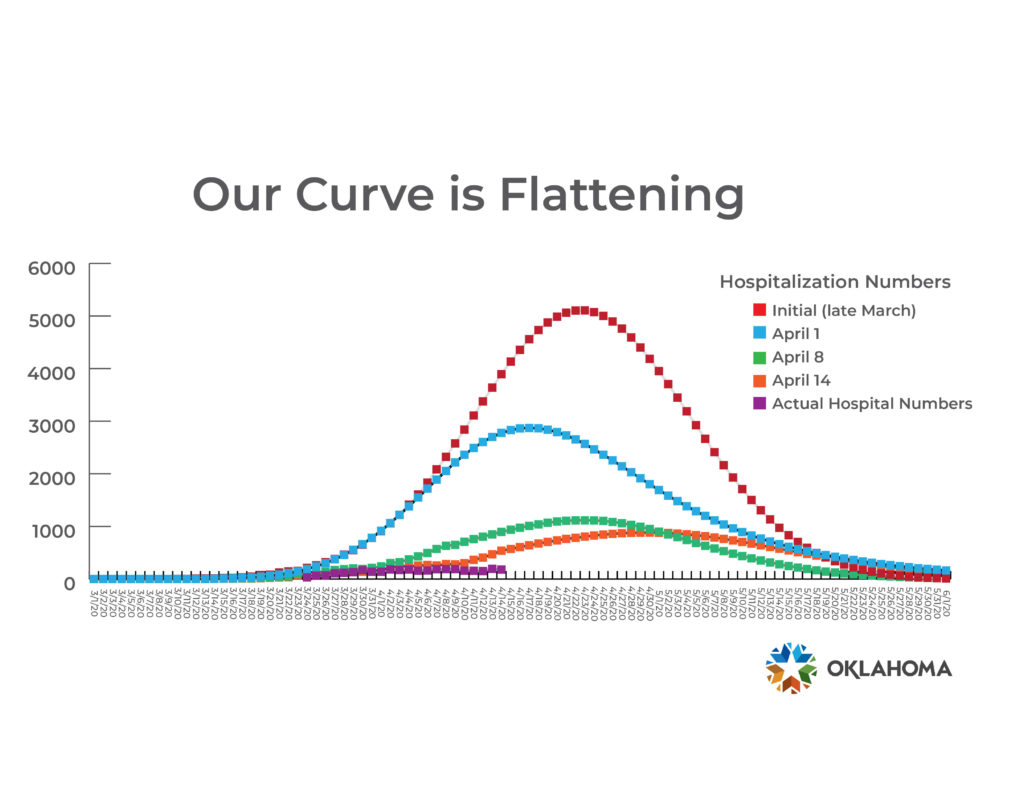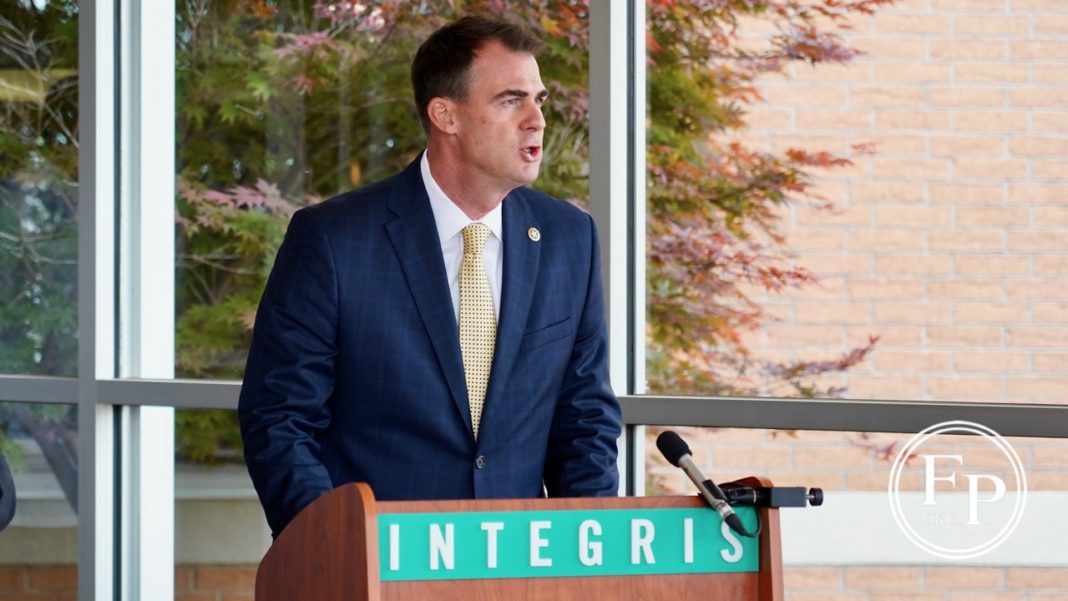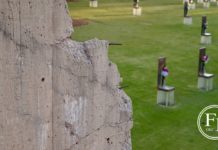Last Updated on April 20, 2020, 9:04 AM | Published: April 20, 2020
The Oklahoma State Department of Health is using a model for predicting the course of COVID-19 infections that is statistical with no basis in epidemiology.
And that model has become the center point for policy decisions by Governor Kevin Stitt.
In a press conference on April 15th, Stitt announced that we are “flattening the curve” here in Oklahoma and is looking forward to reopening the state soon.
“We’re doing this with the guidance of the experts, being data driven… based on what’s happening in Oklahoma, not what’s going on in a different state or different city,” Stitt said.
Graph questioned
The Governor’s office had widely distributed a graph Wednesday showing a prediction that the curve for infections in the state is flattening.

But, the prediction chart had no citations about the source of the model or the data used, a red flag among data scientists.
Free Press posed a question in that same news conference Friday about the sources of their data for the graph.
In response, Secretary of Science and Innovation Dr. Kayse Shrum cited a model recommended by President Trump but criticized by epidemiologists and other data scientists.
“The IHME data is the curve that we’re looking at,” said Shrum in her answer. We’re also looking at our data.”
“So, data here in the state is being looked at by epidemiologists at OU, OSU and the state health department, but the curves, we’re also looking at the IHME model, which is what was recommended to us by President Trump,” said Shrum.

Scientists criticize model
The Governor and Oklahoma State Health Department are using modeling data from the Institute for Health Metrics and Evaluation (IHME) at the University of Washington in Seattle.
The model uses reported deaths from all over the world to project hospital surges.
The IHME model has been widely criticized because it is a statistical model and does not use any information about transmission rates and has no basis in epidemiology.
The model has been criticized by many in the science community due to the volatility in its predictions.
A critique of the model was in the Annals of Internal Medicine published Wednesday, the same day the Governor’s office started widely distributing its model:
One group of international data scientists found the model to be inaccurate in 70% of states in its predictions of death rates, the main metric it uses to model hospital use.
One academic with extensive experience in epidemic modeling criticized Oklahoma’s citation-absent model.
“I think big problems are too much information and a lack of context for any specific result. A model is only as good as its assumptions and data, both of which should be available,” said Dr. Sean Laverty, who holds a doctorate in mathematical biology. He has done research in the mathematics of epidemiology.
Ignoring their own model?
The IHME model released a graphic on Saturday with guidance to states on when their peak is predicted and when the state should be safe to open while keeping social distancing policies in place. Based on that model Oklahoma should not reopen until June 8.
“We are now entering the phase of the epidemic when government officials are considering when certain types of distancing policies may be eased,” IHME officials said in a press release on Friday, April 17. “With today’s release, we provide initial estimates that can serve as an input to such considerations in the US.”
The model assumes that social distancing will continue even after businesses reopen, and rely on states to implement widespread testing, contact tracing, and still uphold bans on mass gatherings.
Oklahoma’s variables
“There are correct ways to perform certain steps mathematically, but there is a lot of decision-making to go into it,” said Laverty. “For epidemiology what factors are most important are age, sex, behavior, and location.”
Oklahoma has many unique issues that can affect hospital usage that are not accounted for in the IHME model.
- Oklahoma is third in the nation in rural hospital closures meaning Oklahoma City hospitals are going to have to pick up the slack for rural infections.
- Oklahoma has also been ranked among the ten unhealthiest states for the past 23 years in part due to a high rate of people with chronic health conditions.
- Oklahoma’s vulnerability score ranks 4th in the nation.
As of April 3, Oklahoma ranked last in the nation in tests per capita.
The Oklahoma State Department of Health opened new drive-through testing sites in recent days but it will take time before those efforts start to show enough data to make these decisions.
Real numbers
In a press conference held by Oklahoma City Mayor David Holt and Dr. Patrick McGough, Free Press asked for McGough’s opinion about the modeling used at the state level. He chose to focus on real numbers of infections, not projections.
“What we need to be looking at as we go into this process is the total number of new cases or just new cases in general. And we need to see if that number is staying the same or going down consistently for at least 14 days.”
Reporter covering the intersection of local politics and Oklahoma families. || Intellectual magpie, and hoarder of datasets. I ❤️ OKC. || When not writing Joey can be found researching light pollution in Oklahoma and visiting Oklahoma schools with her portable planetarium.











